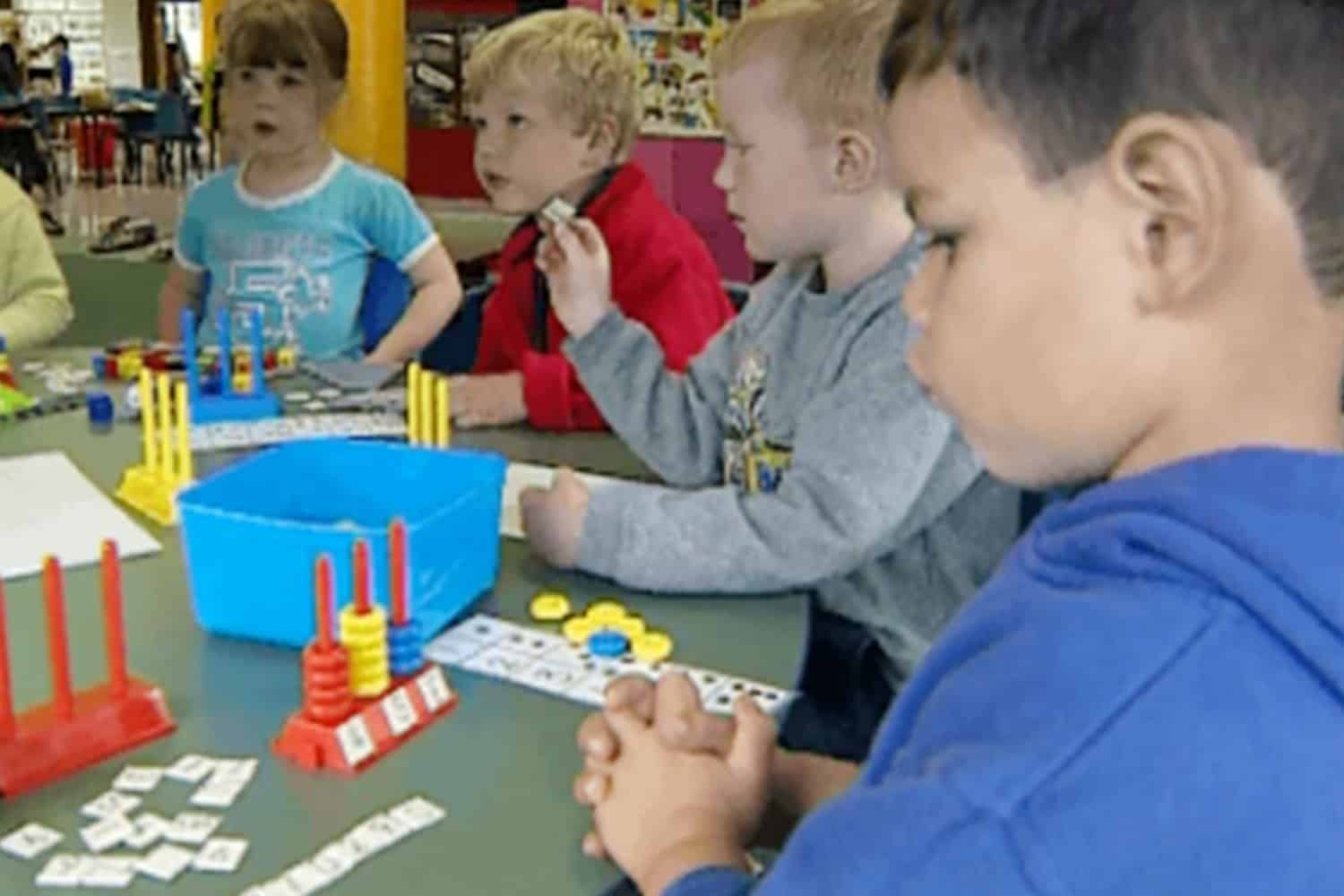This report presents findings from the 2020 ECE Quality and Employment Survey of teaching staff from the community and private parts of the sector.
It is the second of four reports from the survey.
- Report 1. The quality of ECE experienced by children according to their teachers.
- Report 2. Private and community early childhood sector differences
- Report 3. Staff pay and retention.
- NZ Medical Journal. Early childhood education staff are falling through a vaccination policy gap in New Zealand
You can find learn more about the three-yearly national survey here.
Executive Summary
| This report presents data from 2,908 respondents to the 2020 Survey who came from a licensed teacher-led centre that they identified as being either a privately owned or community service. At community-based services teaching staff are likely to stay in their job for longer and are of a more mature age compared with private services. Higher proportions of staff in community services were happy in their jobs, felt respected by their manager, and reported lower workplace stress levels. On how their service performed on the quality of provision for children, there were significant differences between the private and community groups. Respondents from the private part of the sector were: – less likely to have time to develop relationships with children as individuals, – less likely to experience staffing ratios that were better than the minimum legal requirement, – more likely to be working under conditions when fewer than 50% of the teaching staff were ECE qualified, and – more likely to view the quality of their service as not being good enough to use for their child. Most teaching staff did not belong to NZEI, unless they worked in kindergartens. The union was generally seen to be unhelpful and irrelevant. Although for those who were members benefits included solidarity, representation, and collective agreements. The data reflect that while the regulatory requirements are the same for early childhood services regardless of who owns them, the main driver for any private service is making a profit while in any community sector the main driver is usually serving its members. Having said that, the data could be used to open discussions on how private services in particular could be encouraged to reduce child numbers, improve ratios, and do more to support teaching staff such as ensuring staff feel respected and reducing workplace stress. The data show that a key challenge for government, if it wants to raise the quality of early childhood education and care will be to ask the difficult question of whether it should remain locked in to funding commercial interests and the ongoing growth of the private sector. Also, there may be policies it can adjust to give greater balance to the interests of the workforce and the interests of society for high quality ECE. |
Definitions
In this report a “private” service means any licensed early childhood service that is privately owned, this includes by a single owner, partnership, company or corporation.
A “community-based” service is one that is not privately-owned. A community-based service includes incorporated societies, charitable trusts, statutory trusts, community trusts, and services owned by public bodies such as a public hospital or university.
Teacher-led early childhood education and care centres are those where three or more children under the age of 6 years are cared for and taught on the premises and at which 50% or more the adults required for the service licence are qualified and certificated teachers. This includes all preschools, kindergartens, childcare centres, and hospital based ECE services. It excludes home-based services, and it also excludes Playcentres and Kōhanga Reo that the Ministry of Education categorises as being parent or family or whānau-led.
Survey respondents
The data reported here is drawn from a sample of 2,908 respondents who participated in the survey in 2020. This is the total number of respondents who volunteered information on the ownership of their service (private or community/public), and whose service type also met the criteria of being teacher-led and an education and care centre.
The survey has a representative sample of the proportions of teaching staff from teacher-led private and community centres – it is close to what we have in the ECE teaching staff population for these services.
Of the 2,908 respondents, 29% came from the community sector and 71% from the private sector. Ministry of Education annual census data as of 1 July 2020 shows teacher-led community centres had 32% of teaching staff the private sector had 68%.
In this survey 76% of community respondents were from non-kindergarten services. The Ministry of Education’s annual census data as of 1 July 2020 shows this figure to be 60%, therefore teaching staff not working at kindergartens under the control of a Kindergarten Association are over-represented in the survey sample (or put another way, kindergarten teaching staff are under-represented in number in the survey results).
Qualified staff
In the community and private parts of the sector the proportion of teaching staff who held a practising certificate was similar (86% and 85% respectively). Three percent of respondents from community centres and 2% from private centres were qualified early childhood or primary school teachers who did not hold a practising certificate, while the remainder were unqualified or in-training.
Experienced staff
On two measures, staff age and continuity of same employment, it appears that the community part of the ECE sector tends to have more mature staff and greater staff retention.
In community, 45% of respondents were aged 45 years or older compared with 28% respondents from private services.
A higher proportion of respondents at community services, 64%, had stayed at their present place of employment for at least the past two years compared with 52% respondents at private services.
Respect shown by management
A significant difference was found between private and community service respondents on how respectfully they felt treated by their manager or person/s they reported directly to – 72% of respondents from the community part of the sector reported feeling a high level of respect compared with 61% from the private part of the sector.
Employment satisfaction
Thirty percent of respondents in the private part of the sector were not happy in their current job. This is significantly more than for community services where 14% reported not being happy in their job.
Workplace stress
A significantly higher proportion of teaching staff in the private part of the sector (28%) reported being extremely stressed or very often stressed in a typical week at work compared with those working in the community part of the sector (19% respondents).
Sample of comments
- Private: When things go wrong there is no one to take the responsibility. And most people are not honest. We also have to do documentation other than learning stories while looking after the children and we do not get extra time for this.
- Private: At the end of each day 6 to 8 preschool children are sent to my infant toddler room because of the number of children left at the end of the day and numbers do not allow for the extra teacher to stay on – when asked the manager says the number of children do not justify for the preschool teacher to stay until the end of the day so two infant toddler teachers stay on to look after both sets of children – sometimes I’m alone with 4 or 5 infants/toddlers and pre-schoolers – not good quality and too much stress
- Private: Being understaffed, having high risk children, management being frugal with stationary supplies and food provided for the children. We have to wait for weeks till the cupboards are bare in order to get the shopping done.
- Private: A corporate company has just taken ownership of the Centre I work at. In 3 months, 2 staff members have been cut to relieving and ended up resigning. Another staff member has just left, and she is not being replaced. This has added more pressure and workloads on the rest of us.
- Community: Not enough teachers on the floor, having to be the only person responsible for planning, assessment and internal reviews, not enough non-contact time given.
- Community: I am in a high decile area with lots of poverty and social issues. The problems that come with this are huge. Trying to lead a team of traumatised teachers is difficult.
- Community: Our job is insane. I am expected to be a teacher and manager. I get one day off the floor every 2 weeks to do all my rolls as a teacher and manager. I am never not stressed and never able to complete my work. I work as many hours as I can depending on what’s happening in my own life because I don’t want our tamariki to miss out!!!
- Community: As a Head Teacher I feel like my professional work crosses over into my personal life often even though I’m conscience of this. Lack of staff and relievers, sickness of staff causes a lot of stress for Head Teachers trying to please/support the team and meet ratios. Hardly any recognition for the stress of the job.
- Community: I regularly feel like crying at work
Time to get to know children
In the community part of the sector, teaching staff are significantly more likely to feel that they have time to get to know children in their care compared with those working in the private sector. Seventy-two percent of respondents at community services reported having time to develop relationships with individual children compared with 63% at private services.
Among those who answered that they did not have time to get to know children individually, this was due to factors such as the number of children being too large, not enough adults to allow for small group and individual time with children, having high needs children which meant they did not have time for other children, and an emphasis on ensuring that the centre looked good (physical appearance) but not on supporting teacher-child relationships.
Staffing levels and qualified staff
More respondents from the community part of the sector, 45%, reported that adult-child ratios were usually better than the minimum legal requirement at their service compared with 37% respondents from the private part of the sector.
When asked if in the last six months, there had been an occasion/s when less than 50% of staff needed for compliance with the minimum adult-child ratio requirement were ECE qualified teachers, significantly fewer teaching staff from private services replied never (39%) compared with teaching staff from community services (61%). Others reported yes once or twice, sometimes, often, or did not know.
Endorse the quality of their own service
Significantly more staff at private (30%) compared with community (17%) ECE services would not be happy to have a child of their own either at the service they worked at or at one that was of comparable quality.
At my last centre my child did attend there and sometimes I really regret it as she used to be such a bubbly outgoing child. Now she is quite anxious and clingy… she also missed out on a lot of learning due to the centre never getting new or different resources.
Sample of comments from those who could not endorse the quality of their service
- Private: In my opinion, children in ECE do not receive the quality of care that I would expect for the fees charged. The organisation favours numbers over quality.
- Private: The amount of teachers (and often these are relievers who don’t get involved with the children) is too few for so many children. Child safety is daunting!
- Private: I felt like they cut a lot of corners to give the appearance of quality care when actually it was becoming about profit making. Concerns were often brushed aside, and teachers not listened to but parents bringing up similar concerns were reassured immediately!
- Private: I did …. but change of management and no, sadly I no longer would. Very different philosophy and not aligned with my own.
- Community: I wouldn’t want my child in a centre environment as smaller ratios would be more desirable to me as a parent.
- Community: I prefer a bicultural environment, which isn’t a strong aspect of most preschools. Lack of Māori kaiako.
- Community: Convenient to take them with me but would rather put them at another centre where hygiene and health is taken more seriously for the infants and toddlers’ side.
- Community: The calibre of the children at my service I would not want my grandchild around with the swearing, the abuse by some children, and the health of some children. Also, there are too many choices, they don’t have to wear a sunhat.
Union membership
Just 10 percent of respondents from the private part of the ECE sector were NZEI union members. Thirty-nine percent of respondents from the community part of the sector were NZEI members, and within this group the majority worked at kindergartens – 73% of kindergarten respondents belonged to NZEI.
Sample of reasons given for not belonging to NZEI
- Private: When I was being bullied at a previous centre by the manager, I approached the union with the evidence and was told they only help if it turns into a disciplinary issue, not if I wanted to take action.
- Private: I don’t even know what the union is, no one explaining about NZEI Te Rui Roa union.
- Private: I have only ever worked in private ECE settings and never thought it was valid in those settings.
- Private: I’ve never had an employer who is part of the collective agreement, and the union fees are expensive.
- Community: I negotiate my own hourly rate with the Board of Trustees. I used to belong to the union for many years but never had assistance from them so decided to resign.
- Community: I follow what is expected of me and in my contract, I give 200 percent and I am valued staff member. I don’t need to join the union as I work hard and won’t need union support to bail me out.
- Community: I’m a member of a different union as I work in hospital setting.
- Community: I have felt that NZEI has campaigned not for the advocacy of teachers but for their own political agendas, nor have they considered the impact their actions have on children and families.
- Community: Despite their rhetoric, the NZEI are focussed on kindergartens – who are their cash cow – and they have done nothing/minimal for the other part of the sector. NZEI are staffed with delegates/staff who are troublesome in the workforce or were not successful in teaching – therefore they are not credible. The NZEI do not encourage work groups to act like a collective – at every negotiation I have been a part of the representative pushes their issue and it is evident the group have not been encouraged to think strategically or collectively. NZEI do not act like facilitators empowering staff teams they act like an employer. It’s time the sector took them on.
Sample of reasons given for holding union membership
- Private: To feel empowered when I have a meeting with employer, that I will be supported by NZEI who know the policies, no what to say during meeting.
- Private: We had some dramas go down with our unqualified centre manager so I wanted to keep myself safe.
- Private: Was offered free membership while studying. Haven’t got around to getting rid of it yet.
- Private: To ensure that the working class has a voice and the government and employers are kept honest.
- Community: I believe in the lobbing power of the union. We have a collective contract at our work, and it is helpful to have legal support from time to time.
- Community: Recommended by my centre manager.
- Community: Free for students
- Community: Professional development opportunities and pay rate guarantees under the Kindergarten Teachers Collective Agreement.
Discussion
The data reflect that while the regulatory requirements are the same for early childhood services regardless of who owns them, the main driver for any private service is making a profit while in any community sector the main driver is usually serving its members. Having said that, the data could be used to open discussions on how private services in particular could be encouraged to reduce child numbers, improve ratios, and do more to support teaching staff such as ensuring staff feel respected and reducing workplace stress.
The data show that a key challenge for government, if it wants to raise the quality of early childhood education and care will be to ask the difficult question of whether it should remain locked in to funding commercial interests and the ongoing growth of the private sector. Also, there may be policies it can adjust to give greater balance to the interests of the workforce and the interests of society for high quality ECE.









